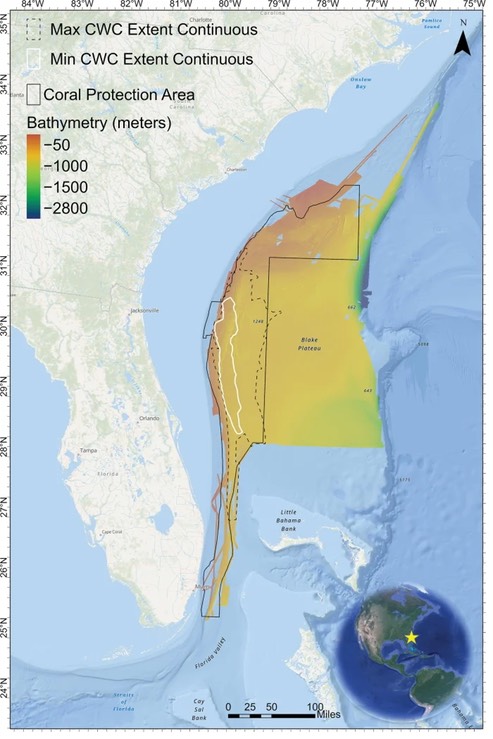Blog
Oceanography
Deep Sea Coral
Scientists just mapped the largest deep-sea coral reef yet, and it’s bigger than Vermont.

It’s called a deep-sea reef because it grows where sunlight cannot reach. This reef was documented at depths ranging from 655 feet to 3,280 feet—more than half a mile below the surface.
Similar to coral reefs where boaters often snorkel in tropical destinations, this deep-sea reef is fragile. However, it’s different in the way it develops. It’s built of filter-feeding corals. There’s no photosynthetic algae here. Instead, the deep-sea corals get energy from particles floating in the water, in darkness and cold, well below the thermocline.
This is another amazing component of that great river that powerfully, yet silently, resides off our eastern seaboard!
/fl
Weather
Bye Bye Dial-a-Buoy
Today, 17 March 2024, marks the latest example of marine infrastructure volatility—the shutdown of the service that allowed us to obtain weather and sea-state information by toll-free telephone service. It’s hard to justify a service that few people use. The information is still available through the world-wide-web, however you’ll need an internet connection.
Effective Sunday March 17, 2024, the National Weather Service National Data Buoy Center will discontinue their Dial-A-Buoy Interactive Voice Response (IVR) system that provides buoy data in voice format via IVR toll-free numbers and primarily supports public user data inquiry based on station ID.
This service is being discontinued due to the low volume of users and the cost to retain the service. NDBC encourages any user of this service to use the redesigned NDBC website with mobile compatibility at https://www.ndbc.noaa.gov/
Source: https://www.weather.gov/media/notification/pdf_2023_24/scn24-06_dab_termination.pdf
/fl
Safety
The Parabellum Principle

Freedom is not free, nor is the quest for peace always peaceful. The truth behind the Latin phrase "si vis pacem, para bellum” (if you want peace, prepare for war), is just as valid today as it was the day it was first uttered.
We tend to associate sailing with leisure and carefree enjoyment; an excellent circumstance for letting our guard down. A recent case illustrates the folly of doing that. And, all threats are not in foreign waters, as the 2004 Hawks case illustrates.
Situational awareness is something that needs to be a constant companion when we are out and about in the world, especially when we are in areas of the world where the native inhabitants might view the average American sailor as a ’wealthy’ target of opportunity—which happens to be a large part of planet earth.
I would always tell my sailing students to “never let your boat go anywhere that your brain has not already been”—primarily to help them avoid navigation hazards. But, in todays world, hazards are not restricted to the category of navigation. You’re not likely to find a list of civil hazards in that glossy brochure published by the Chamber of Commerce—or even in most ‘Cruising Guides.’ Good intelligence information regarding unfamiliar waters can be found online at places like Noonsite, or The World Factbook.
Stay alert. Stay safe.
Semper Paratus!
/fl
